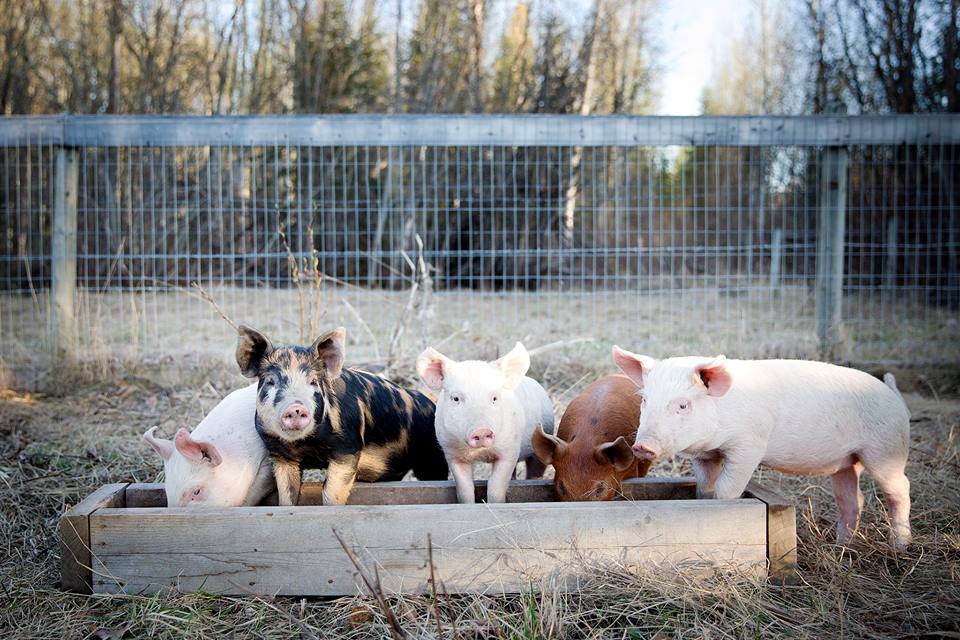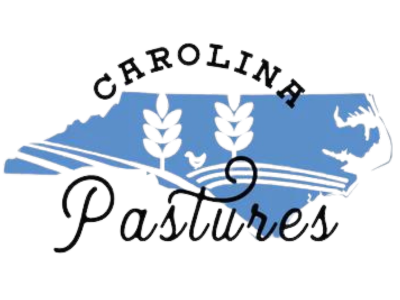Carolina Pastures FAQs
We answer your questions about our regenerative agriculture practices, local meat delivery, meat storage and how to get the best prices on pasture raised poultry and meat from our small farm.
FAQ
How to Buy our Pasture-Raised Meats
Is Dawnbreaker Farms the same farm as Carolina Pastures?
Yes! Carolina Pastures is Dawnbreaker Farms. We raise pasture-raised, GMO-free meat here on our small family farm in Orange County, North Carolina. Our goal is simple: heal the land, care for the animals, and feed our community the kind of food we’re proud to put on our own table. Whether you see Carolina Pastures or Dawnbreaker Farms, you know it’s us!
Can I find you at any local farmers markets?
Yes, Carolina Pastures is at the Carrboro Farmers Market every Saturday. Farmer’s markets are a great way to meet us and ask questions about how we raise our animals.
Do you offer Farm Pickup, Local Delivery, or Shipping?
Yes! We offer Farm Pickup and Local Delivery. Local Delivery is available in the NC Triangle area including Raleigh, Durham, Chapel Hill & nearby areas. View full details on the zip codes we service and thresholds for free delivery. We do not offer Shipping at this time.
How does Local Delivery work?
We deliver in the Triangle area, serving Wake, Durham, Orange, and the eastern parts of Chatham County. View full details of the zip codes we service and thresholds for free delivery. Place your order by Monday at Midnight for delivery on Wednesday between 10am-7pm. Free delivery is available. On the day of your meat delivery, leave out a cooler that we can place your meat into. You will receive an email confirmation that your order is out for delivery with the option to track the progress. Move the meat to your fridge or freezer ASAP upon receiving.
How can I get free delivery?
Free delivery is available in the Triangle area including Wake, Durham, Orange, and the eastern parts of Chatham County! View full details of the zip codes we service and the the thresholds for free delivery.
How do your Subscriptions work?
Check out all of the details on our Subscribe & Save page.
Where can I find a Thanksgiving turkey farm near me?
We’ve got you covered! We’re the farm folks turn to in the Triangle for their local non GMO turkey at Thanksgiving. We also offer our turkey cuts year-round! Our selection of pasture-raised, antibiotic free cuts like turkey breast and turkey wings bring the healthy flavor and nutrition all year long.
FAQ
Regenerative Agriculture Farm Practices
How are your animals raised?
At Carolina Pastures, we respect our animals and provide care so that they may live the way God intended them to live. Animals here are free to be themselves—pigs root in the forest, chickens forage on pasture, and cows graze fresh grass every day. We manage our pastures and forests in a way that restores soil health, supports biodiversity, and improves the land over time. Learn more about our farm practices.
Where and how are your animals processed?
We embrace the mantra of “one bad day” wherein we give our animals the things they need to live the best life ever. The transition from animal to plate is made as quickly and smoothly as possible with as little stress as possible. That’s why we process our poultry on site and use a USDA-inspected and Animal Welfare Approved processor for our pigs and cows.
Are your farm products “antibiotic free”?
Our products never contain antibiotics. We only use antibiotics in rare cases (a handful of times over 10+ years) to save an animal from illness or death and we don’t sell meat from these animals.
Are your products “hormone free”?
Absolutely no growth hormones! All animals naturally contain hormones. Our products are free of any added hormones, so in that sense they are "hormone free."
Do your animals receive vaccines?
Yes–our animals stay healthy first and foremost because they live in a clean, natural environment that supports their well-being. We also use vaccines when recommended by trusted vets, as part of our commitment to thoughtful, responsible stewardship of our animals.
Do you raise GMO free meat?
Yes, we raise GMO free meat including our no GMO chicken and non GMO turkey. We give our pigs and poultry a high-quality, local, non-GMO feed. Our beef is 100% grass-fed, grass-finished (no grain, ever).
Is your feed Certified Organic?
Nope, but many of our regenerative agriculture farm practices go far beyond organic requirements and we never use chemicals on our pastures. We give our pigs and poultry a high-quality, local, non-GMO feed and we are proud that we have a strong relationship with our local feed mill, which is just a few miles up the road. In fact, the owner’s mother grew up on our farm, in the same house we live in, and his aunt and uncle farmed cattle and tobacco on this land. It was at our request that the feed mill began offering non-GMO feed and invested in the infrastructure to do so. They also buy their grain from local farmers. We value this relationship and the opportunity to keep more of our farm’s dollars flowing through the local economy.
By the way, our beef is 100% grass-fed, grass-finished (no grain, ever).
FAQ
Meat Price & Storage
How is your meat packaged?
All of our meat comes vacuum sealed and frozen. Our 100% grass-fed beef is dry aged for 14 days.
How long will frozen meat last in my freezer?
Cuts will stay fresh up to one year in the freezer as long as the vacuum seal has not been compromised. If a seal comes loose, we recommend using this product first.
How much freezer space will I need?
As a general rule, one cubic foot of freezer space will hold up to 25 pounds of meat.
How do you set your prices?
A lot of thoughtful math goes into our pricing! We track batches of each species, feed conversion, weight gain, cost of inputs, and farm profitability. At the end of the day, we’re aiming for a price that reflects the true cost of raising healthy animals without cutting corners or pricing out the folks we’re here to feed. To the extent that it is possible for each family, we believe strongly in voting with your food dollars by supporting local farms.
How can I get the best price on your meats?
Consider our Subscribe & Save and Bulk offerings for 20-30% savings and free delivery.
Don't see your question? Email ben@dawnbreakerfarms.com

